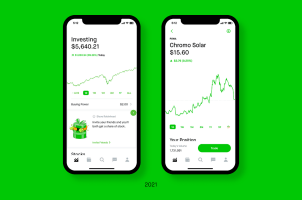Flashing Lights, Loud Noises in Casinos Might Encourage Problem Gambling, British Columbia University Research Suggests
Posted on: November 4, 2018, 10:00h.
Last updated on: October 22, 2024, 09:46h.
New research out of the University of British Columbia (UBC) in Canada suggests that all the blinking lights and dinging bell-like noises in casinos may be as problematic as they are stimulating. A study from UBC researchers indicates that these time-honored basics of casinos everywhere could play a key role in promoting risky gambling behavior.

The findings were recently detailed in the neuroscience journal JNeurosci, and indicate that the visual and sonic overload people experience when walking through a casino could be a significant factor in promoting problem gambling.
We found that an individual’s choices were less guided by the odds of winning when the casino-like audiovisual features were present in our laboratory gambling game,” researcher Mariya Cherkasova told Science Daily.
Risky Business
The study was prompted by previous research at UBC which found that rats were more prone to risky decision-making when flashing lights were added to the equation. Scientists wanted to see if the same behavior held true in humans.
A portion of the 131 participants were given a video game to play in a quiet environment. The rest played the same game, but with all the bells and whistles you’d find while playing a slot machine in a real casino.
“Using eye-tracker technology, we were able to see that people were paying less attention to information about the odds of winning on a particular gamble when money imagery and casino jingles accompanied the wins,” senior author of the Catharine Winstanley said to Science Daily.
Eye-tracking also revealed increased pupil dilatation, a strong indication that those subjects were more “aroused or engaged.”
Those playing without the audiovisual stimulation were observed to be more reserved in their decision making, losing less money and showing less compulsive behavior.
Another Piece of the Puzzle
It’s the latest data point for a scientific community trying to pin down the factors that go into compulsive gambling.
Earlier this year, researchers had a something of a breakthrough when they were able to identify the specific arena of the brain responsible for risky activity in primates. Not only that, but by suppressing that area of the brain, they found they were able to curtail that activity by 30 to 40 percent.
Another study shed light on the differences in men and women when it came to gambling addiction.
Scientists say that this most recent research sheds light on why some people continue to gamble, even when they know the odds are stacked against them.
“While sound and light stimuli may seem harmless,” added Winstanley, “we’re now understanding that these cues may bias attention and encourage risky decision-making.”
She says they’ve already received funding for a new study which will allow them to scan the brain of gamblers to further determine what drives them to take such risks.
Related News Articles
Las Vegas Casinos Are Open, But Visitors Staying Away
UK’s National Health Service Breaks Up with the Gambling Industry
Online Gambling Not Important in Singapore, According to YouGov Survey
UK Problem Gambling Rate Remains Low, New Research Shows
Most Popular
Genovese Capo Sentenced for Illegal Gambling on Long Island
FTC: Casino Resort Fees Must Be Included in Upfront Hotel Rates
NBA Referees Expose Sports Betting Abuse Following Steve Kerr Meltdown
Former Resorts World & MGM Grand Prez Surrenders Gaming License
Most Commented
-
Caesars Virginia in Danville Now Accepting Hotel Room Reservations
— November 27, 2024 — 8 Comments -
NBA Referees Expose Sports Betting Abuse Following Steve Kerr Meltdown
— December 13, 2024 — 7 Comments -
Former Resorts World & MGM Grand Prez Surrenders Gaming License
— December 15, 2024 — 7 Comments -
VEGAS MYTHS RE-BUSTED: Casinos Pump in Extra Oxygen
— November 15, 2024 — 5 Comments
















Last Comment ( 1 )
I abhor the noise from slot machines in casinos. I avoid these but unfortunately have to put up with the noise when playing another machine in the vicinity. The noise irritates me to such an extent that I cut short my stay.. To friends who want to visit a casino for first time, I discourage them to go due to the noise pollution. It is absolute nonsense in my view, that the noise encourages gambling. It has the opposite effect on me. It is so annoying that I limit my visits to the casino..